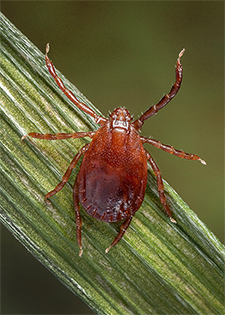28 May 2013 (11:23 UTC-07 Tango)/18 Rajab 1434/07 Khordad 1391/19 Ding-Si (4th month) 4711
A third person has now died, possibly of SFTS (Severe Fever with Thrombocytopenia Syndrome) in Korea. Lab results are taking a long time to confirm whether or not the victims had SFTS. He was suffering from fever, stomach problems and septicemia. These symptoms could also been associated with meningitis.
The second Korean to die did so on 16 May, and has finally been confirmed to have been infected with SFTS. He was a cattle farmer and reports say his body was covered in tick (a type of blood sucking spider/arachnid) bites.
The first Korean to die did so in August 2012. She was only recently confirmed to have SFTS. It took several blood tests to confirm SFTS. She was bitten by a tick in July 2012. One month later she suffered fever and stomach problems. The tick bite had not healed and began swelling. She died four days after being transferred to Seoul National University Hospital.
In Japan, at least 15 people have been infected, and eight have died from SFTS. However, researchers were having trouble connecting the disease to ticks, because they couldn’t find any that were carrying the virus. Finally, this past week they found a tiny 3mm tick on the latest human victim. The tick tested positive for SFTS.
The last reports out of China said researchers were also having problems making definitive connections between ticks and humans, but assumed it was being caused by ticks.
Here’s the rub; as I’ve posted before, it seems this SFTS is evolving independently in the different countries where it’s being found (it evolved from the bunyavirus). Japanese researchers have pointed out that their SFTS is slightly different than the SFTS in China.
The infected tick just found in Japan is reported to be the Haemaphysalis longicornis tick. The same tick associated with Lyme disease.
Unconfirmed reports say SFTS has also been found in the Rhipicephalus microplus tick. This tick was supposedly eradicated from the United States, but is still found in Mexico, Central America and parts of Austral/Asia and east Africa.
Breaking news update as of February 2019: Longhorn ticks are making their way back to North America!
